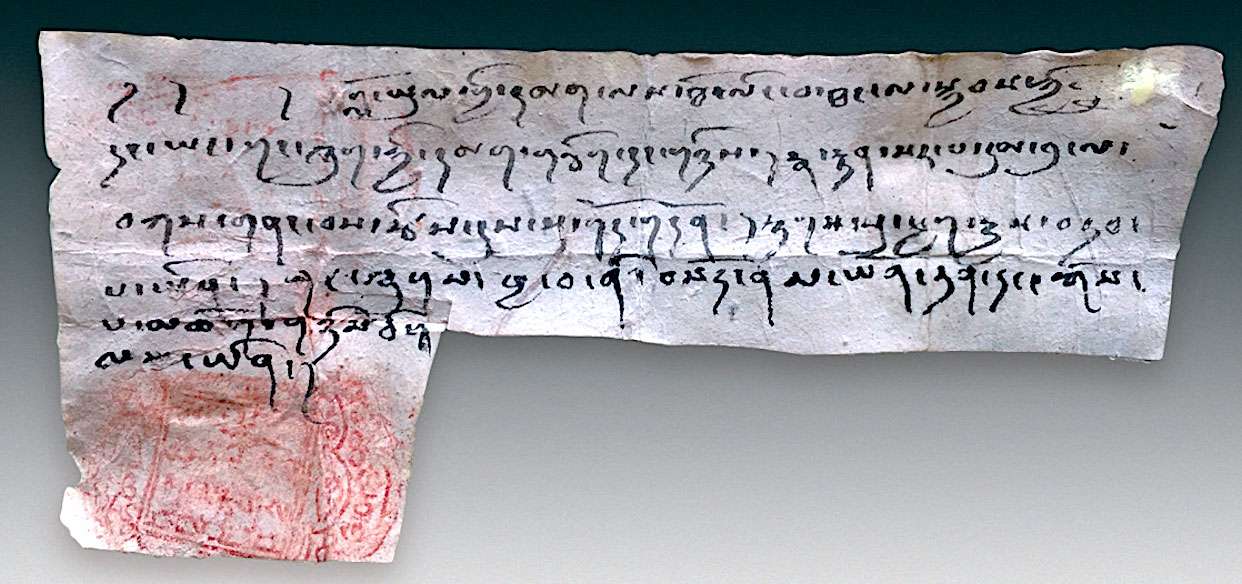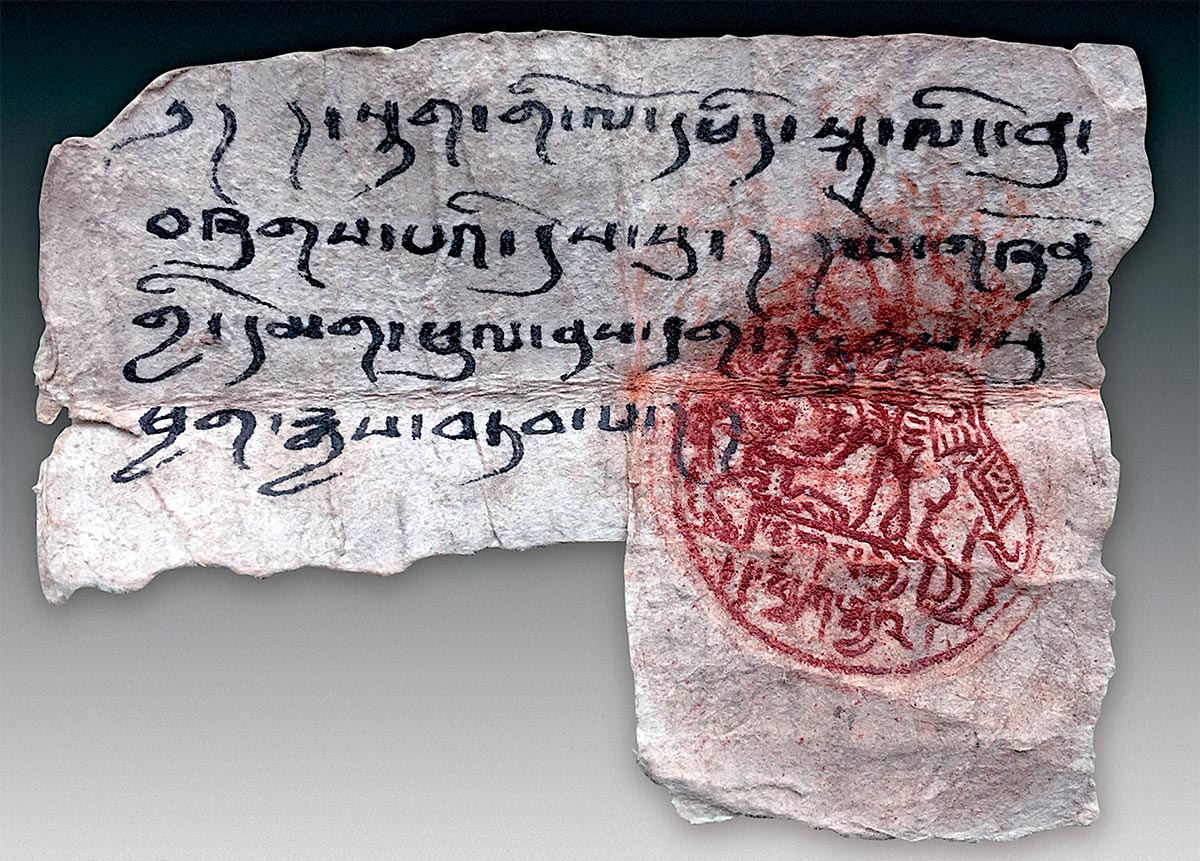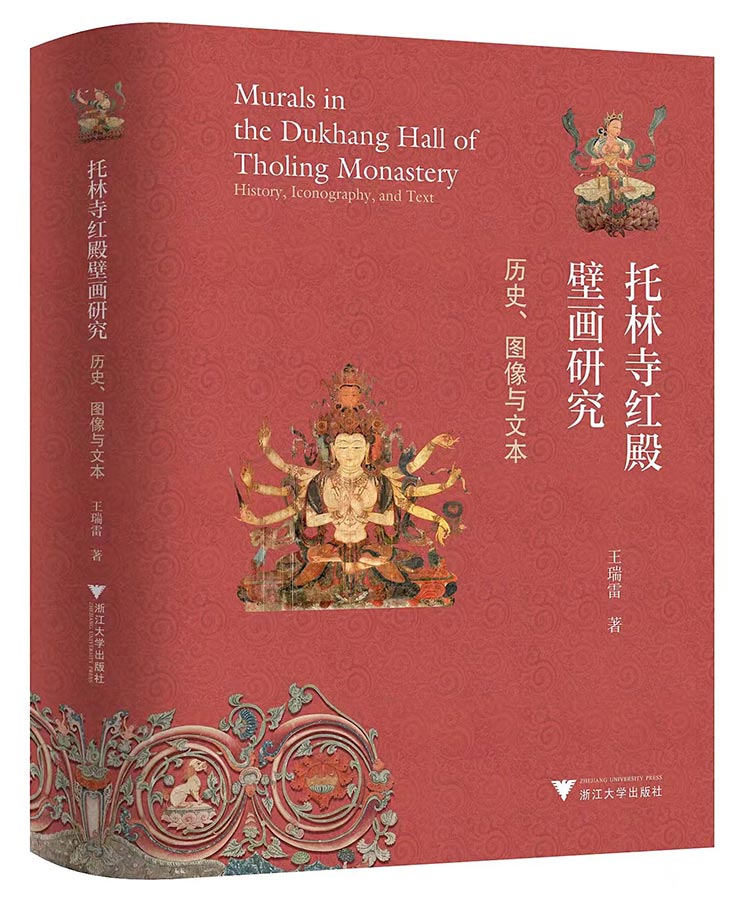New Discoveries and Research on Murals in Tibetan Buddhist Monasteries
In recent years, scholars based in China have conducted research on the cultural heritage of Tibetan Buddhism from various perspectives, resulting in a series of archaeological reports as well as case studies on particular traditions and specific monasteries. Included among these studies is a systematic study of Tholing Monastery 托林寺, the royal temple of the Guge 古格 Kingdom in the Ngari 阿里 region of Tibet, through examination of recently discovered materials and surviving murals depicted in the main hall.
Tholing Monastery, founded by Yeshe-Ö (Ye shes ’od, 947-1024), a descendant of the Tubo Dynasty, served as the political and religious center of the Guge Kingdom, which was the historical site of the Zhangzhung civilization. The monastery was not only the place where the Guge royal family conducted political affairs and issued decrees, but also a sacred site marking the beginning of the Later Diffusion of Buddhism in Tibet. Recent archaeological discoveries and research on Tholing Monastery centered on two main aspects.

Fig. 1. Military paper with seals. Official divination remarks prior to a war. (Photo courtesy of the author’s research team)

Fig. 2. Military authorization paper with seals. (Photo courtesy of the author’s research team)
Firstly, in August 2016, the north-side riverbed around Tholing Monastery slipped, resulting in the collapse of some early-stage stupas that had stood on the edge of the riverbed into the Xiangquan River. Therefore, the Institute of Cultural Relics Protection of the Tibet Autonomous Region and some other units relocated the endangered stupas. During this process, a large number of invaluable Buddhist tsha-tsha tablets in stupa shape and handwritten manuscripts were unearthed from the six relocated stupas. Notably, pages of a historical document from the 11th-12th century were found in a stupa partially collapsed into the valley [Figs.1-2). The document recorded a range of important information, including wars between Guge and Glo yul 洛域, donation relationships between the Guge royal family and Tholing Monastery, land disputes between pastures and monasteries, as well as royal commendations and warnings to officials and loyal citizens. These documents are the earliest official documents of the Guge Kingdom discovered in western Tibet, providing valuable firsthand materials for scholars to understand the official documentation characteristics of the Guge Kingdom. The format, writing style, seal patterns, and preventive measures such as inked lines on the left margin of the documents are very similar to the official documents issued by the Dunhuang Tubo Dynasty. These findings offer precious materials for further understanding of the relationship between early Guge official documents and Tubo documents, as well as exploring the political and religious relationships and social conditions of the Guge Kingdom around the 11th-12th centuries. As such, these discoveries hold significant historical value.

Fig. 3. Cover of A Study on the Murals of the Red Temple of Tholing Monastery: History, Images, and Texts by WANG Ruilei. (Zhejiang University Press, 2023)
Another breakthrough lies in the research on the Red Temple of Tholing Monastery. Constructed under the reign of the Guge King Khri nam mkha’i dbang po phun tshogs lde (1409-1481), the Red Temple constitutes the largest surviving Buddha hall from the Buddhist revival period of the Guge Kingdom in the 15th-16th centuries. Serving as an important ceremonial space for the royal family to worship, its murals reveal the early political and religious strategies of the Guge Kingdom, providing invaluable clues to the complex political and religious history of the middle-to-late Guge Kingdom. The mural configurations reflect the complex interactive relationships and religious discourses between sects of western Tibet and Ü-Tsang regions. My recently published book, entitled A Study on the Murals of the Red Temple of Tholing Monastery: History, Images, and Texts 托林寺红殿壁画研究:历史、图像与文本, resolves issues regarding the specific builders and the construction period of the Red Temple [Fig. 3]. Through comparative research on murals of similar themes from early and contemporary periods in the Ali and Ü-Tsang regions, and in conjunction with tantric texts and related rituals and practices, I reinterpret the content and teachings depicted in the murals of the Red Temple. This reconstruction elucidates the traditions of early Guge teachings and their interactions with the political and religious spheres of the Ü-Tsang region. Through detailed textual analysis of the murals, the book presents the historical landscape of the revival of Buddhist art and political expression in the Guge Kingdom during the 15th and 16th centuries. 1
WANG Ruilei is currently a research fellow of the “Hundred Talents Program” in the School of Art and Archaeology at Zhejiang University. Email: ruileiwang@aliyun.com